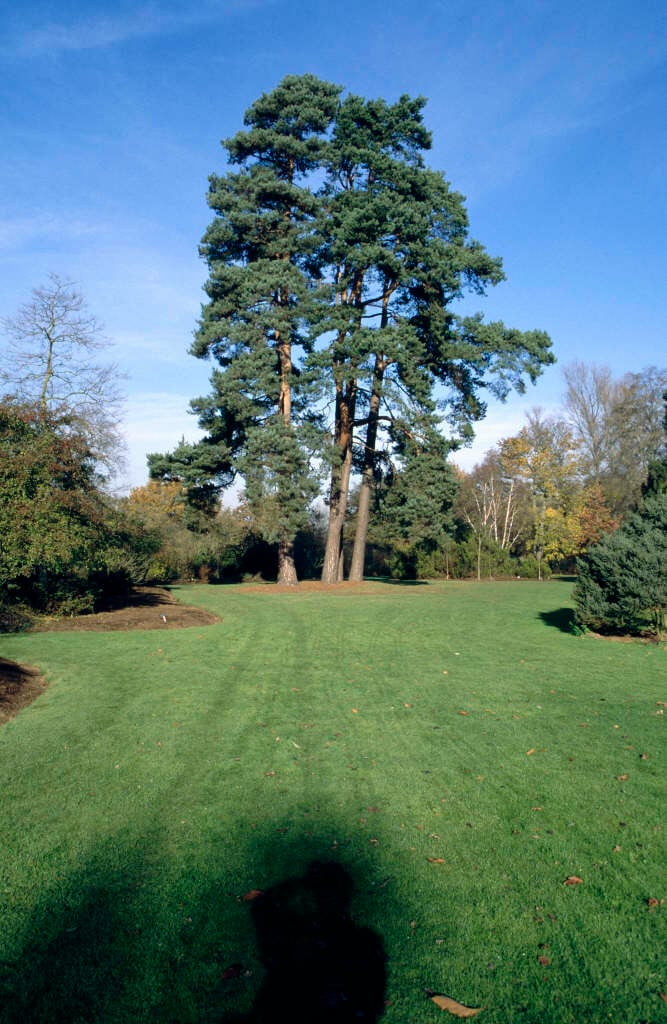Pinus sylvestris
Scots pine
A large, evergreen tree to 25m, with the upper trunk and branches orange-brown, developing a picturesque, irregular outline with maturity. Twisted grey-green needles are borne in pairs. Cones 5cm in length
Other common names
Archangel redwoodBaltic redwood
see morebish apples
European turpentine
Norway fir
red deal
Scotch fir
Scotch pine
Scots fir
yellow deal
Size
Ultimate height
Higher than 12 metresTime to ultimate height
20–50 yearsUltimate spread
Wider than 8 metresGrowing conditions
Moisture
Well–drainedpH
Acid, Alkaline, NeutralColour & scent
| Stem | Flower | Foliage | Fruit | |
| Spring | Yellow | Green Grey Silver | ||
|---|---|---|---|---|
| Summer | Green Grey Silver | |||
| Autumn | Green Grey Silver | Brown | ||
| Winter | Green Grey Silver |
Position
- Full sun
Aspect
East–facing or South–facing or North–facing or West–facing
Exposure
Exposed or ShelteredDrought resistance
Yes Hardiness
H7Botanical details
- Family
- Pinaceae
- Native to GB / Ireland
- Yes
- Foliage
- Evergreen
- Habit
- Columnar upright
- Genus
Pinus can be shrubs or large, evergreen trees, some species with attractive bark, developing an irregular outline with age and bearing long needle-like leaves in bundles of 2, 3 or 5; conspicuous cones may fall or remain on the tree for years
- Name status
Correct
- Plant range
- Eurasia
How to grow
Cultivation
Grow in any well-drained soil. Can be used in native plantings. See Trees: buying and planting specimens
Propagation
Propagate by seed
Suggested planting locations and garden types
- Coastal
- Wildlife gardens
- Low Maintenance
- Hedging and screens
Pruning
No pruning required
Pests
May be susceptible to adelgids, conifer aphid, sawfly larvae, and pine shoot moth
Diseases
May be susceptible to honey fungus and needle cast diseases
Get involved
The Royal Horticultural Society is the UK’s leading gardening charity. We aim to enrich everyone’s life through plants, and make the UK a greener and more beautiful place.
